Meet The Conservationist Saving The Rare Pink Dolphins Of Brazil's Araguaia River From Illegal Fishing And Damming
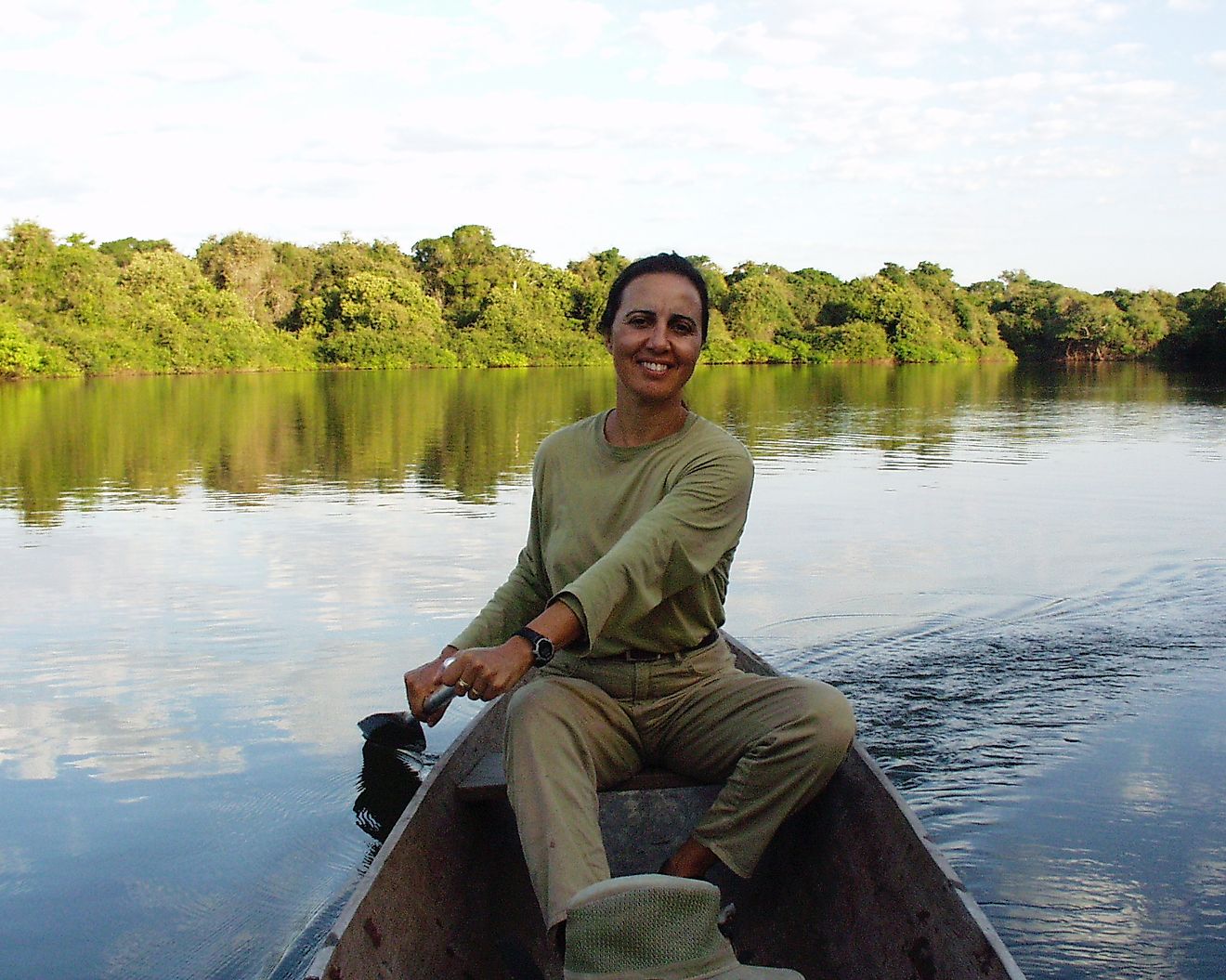
Brazil can easily be described as a 'cradle of biodiversity.' The land and the waters of this South American country teem with species of flora and fauna found nowhere else on this planet. One such species is the Amazon River dolphin or Inia geoffrensis. Also called the pink river dolphin or boto, it is the largest of the world’s freshwater dolphins. It thrives in the Amazon and Orinoco river basins of the country. For years, it was thought that the dolphin living in Brazil's Araguaia River basin was also Inia geoffrensis. However, in 2015, the world was in for a surprise. A team from the National Institute of Amazon Research (INPA) conducted a genetic analysis study that revealed that the pink dolphin in the Araguaia was a different species - and named it Inia araguaiaensis. According to researchers, it probably got cut off from the rest of the Amazon basin around 2 million years ago and evolved into a new species. The formation of large rapids in the Tocantins River, now under a major dam, could have led to the isolation of the dolphin population.
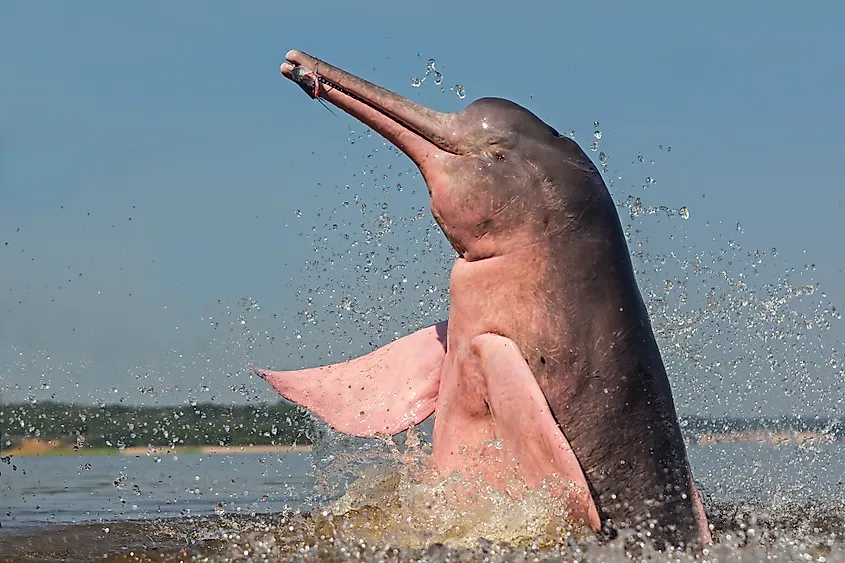
Today, although the IUCN is yet to accept the Inia araguaiaensis as a distinct species, conservationists like Dr. Silvana Campello are wasting no time to protect this rare animal whose estimated population was found to be no more than 1000 individuals. Campello is the President of Instituto Araguaia, a non-profit devoted to the protection of Cantão State Park in the Araguaia River basin of Brazil.
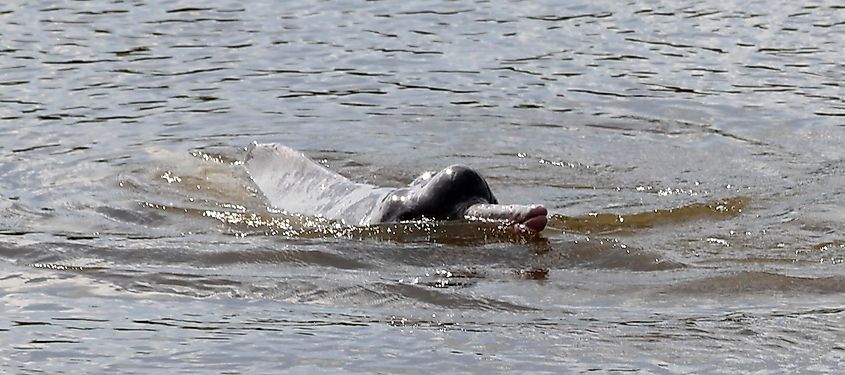
The Cantão State Park is referred to as the 'nursery of the Araguaia'. Every year, the area experiences widespread flooding as the Araguaia and its tributaries overflow. In the dry season, the waters recede to the riverbed leaving behind 850 oxbow lakes that serve as the reproductive sites for over 300 species of fish. In the wet season that follows, the fish migrate into the flooded forest and feed upon the abundant supply of fruits. This annual wet/dry cycle replenishes the river system's fish stock. The plentiful availability of fish in the area supports diverse populations of predators, including birds, caymans, giant otters, jaguars, and the pink dolphin.
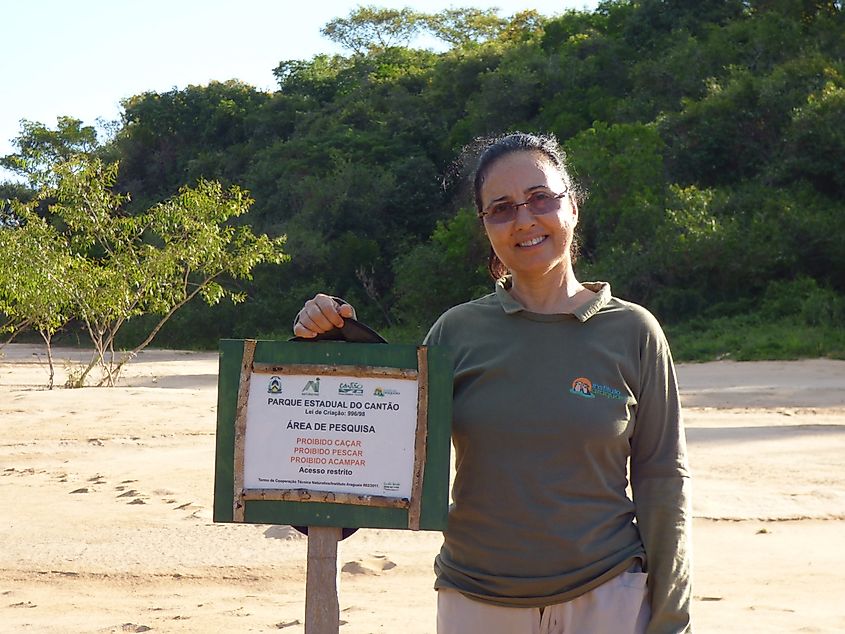
"When I first entered Cantão, in the Araguaia River basin of Central Brazil, not only its natural beauty impressed me, but also its exceptional abundance of fauna that seemed to be much greater than the reported standards for the Amazon. Among the most impressive animals was the pink dolphin, a docile and charismatic animal," Campello described her initial experiences of working in the Cantão State Park - the place where she fell in love with the dolphin she is striving hard to protect.
Following the labeling of the Araguaia River's pink dolphins as a new species by the INPA, Campello and her team at Instituto Araguaia decided to survey the new species in Cantão. Funding from organizations like the Mohamed bin Zayed Species Conservation Fund allowed the team to conduct their research work that reinforced the Araguaia river dolphin’s distinctiveness from other dolphins in the Amazon River basin.
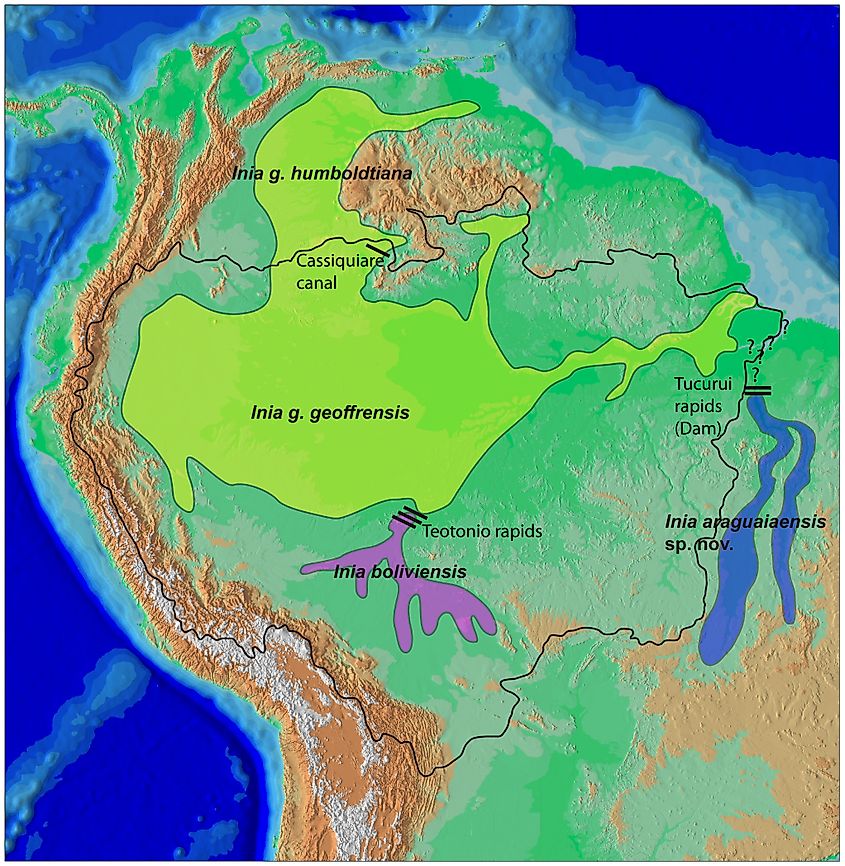
"We used unmanned aerial vehicles (UAV’s), like drones and blimps, to observe dolphins from the air in their natural habitat. The footages allowed us to pioneer new ways to document unique behaviors, such as belly-crawling over sandbars and foraging in small pools. We also performed sample counts of Araguaia river dolphins throughout the Araguaia basin and detected several threats to the species. We found that Cantão Park hosts a larger number of dolphins in the entire basin," Campello mentioned some details of the research work related to the dolphins.
The hard work of Campello's team bore fruit when the Brazilian government recognized that Inia araguaiaensis as a new species. It was also designated the EN (endangered) conservation status by the government.
"We are still waiting for the IUCN to recognize the new species and its EN status. However, Inia geoffrensis is under category EN, which for now, also applies to the dolphins found in the Araguaia," informed Campello.
The endangered status of the pink dolphin of the Araguaia also means that it faces a multitude of threats that puts the future of the species at risk.
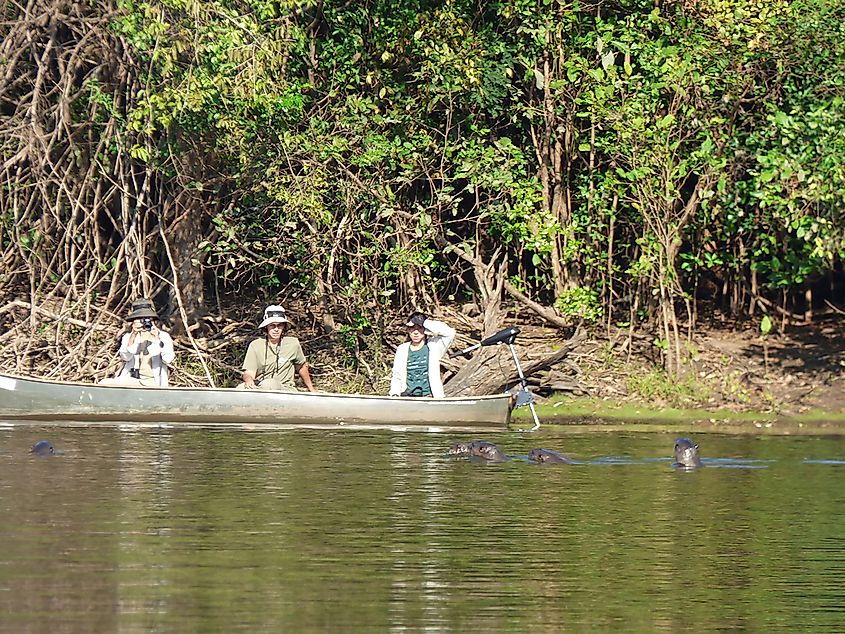
"During our surveys along the Araguaia river, we found groups of Inia araguaiaensis that would become isolated by a dam in the Garças River – a tributary of the Araguaia. Another tributary, the Formoso River, was being sucked dry by irrigation pumps for soybean fields, with several dolphins found stranded. In addition, fishers who have their fishing nets destroyed by dolphins perceive them as competitors for fish and end up throwing poisoned fish at them," Campello summarized the biggest threats to the species.
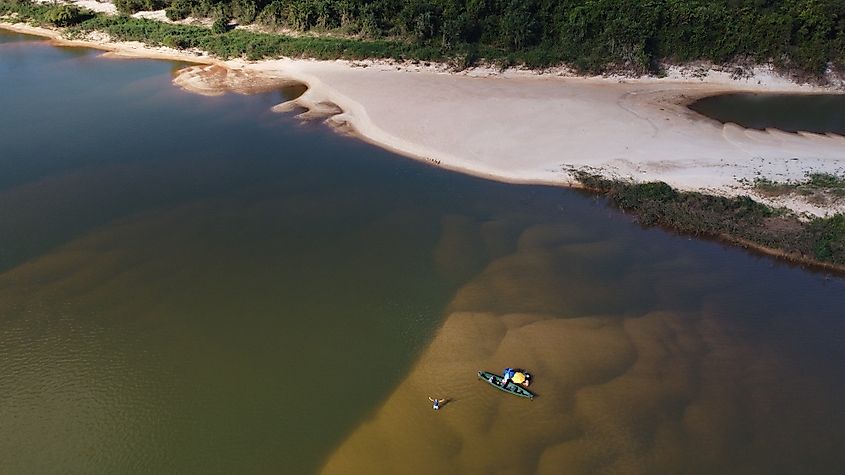
To protect the dolphin population from the above menaces, the team at Instituto Araguaia is focusing on the protection of Cantão Park and its surroundings from illegal fishers, poachers, and dam construction.
"We guarantee the protection of the fish stocks on which the Araguaia river dolphins depend in order to survive. Also, we supported the legal action that resulted in the suspension of the construction of the dam in the Garças River until the company presents solutions to its negative impact on the dolphins. Our team rescues stranded dolphins around irrigation pumps. Our technical discussions and bringing the issue to the media helped convince authorities to install water level gauges, and sealed digital flow meters at irrigation projects and order pumps to stop whenever river levels become too low," informed Campello.
Besides the above activities, the team at Instituto Araguaia has also developed a strong Outreach Program that includes presentations at schools and fishers associations, visits to Cantão, and the research base at the institute.
"We try to raise awareness and build a constituency for the protection of the Araguaia river dolphins," said Campello.
It is for dedicated and passionate conservationists like Campello that species with such limited distribution as the pink dolphins of the Araguaia River are still surviving. Today, Campello enjoys watching the pink dolphins following her canoe for long periods as she journeys in the park. Seeing a mother dolphin and cub peacefully swimming past her research base gives Campello immense satisfaction for she knows that they are in a protected area.
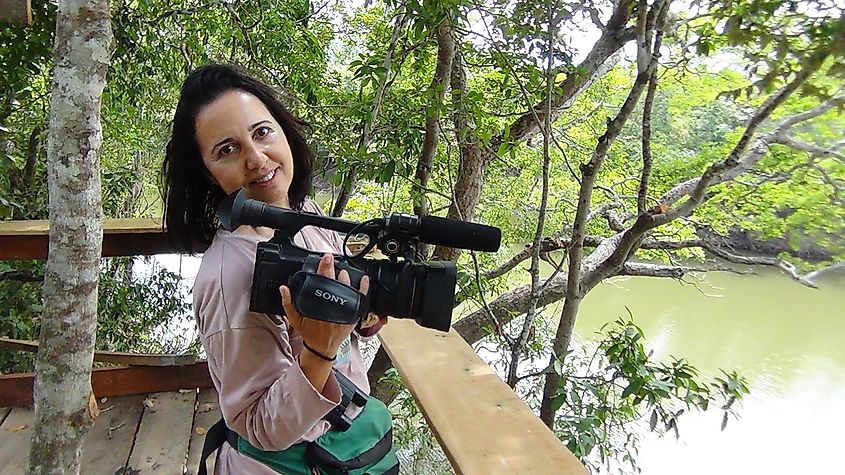
"Planet Earth is like a house of cards, each card being a different species: you may remove a few cards, and nothing happens, but you eventually remove a card that causes the house to collapse. Don’t blame that one card alone, for every card removed made the house more unstable. If we keep losing species, we will cause the planet to collapse. The Araguaia River dolphin is under threat. There are fewer than one thousand individuals in nature, so everyone counts," stated Campello.











